What do red and white have in common? The flags of doubles winners from different countries can feasibly end up comprising only these two colours. Our preview specialist, Aaron Wong, interprets the draw and performances leading up to the second World Championships for Glasgow.
Photos: Badmintonphoto
Qiu Zihan, Tian Qing, Xu Chen, Kenichi Hayakawa, Lindaweni Fanetri, and Nitya Krishinda Maheshwari: Doesn’t it feel like a lifetime ago these names were heard? But they are some of the medallists from the previous World Championships. A great deal more than usual has changed in badminton these couple of years.
Yet the possibility to upgrade silver to gold remains for a 2011 medallist who, if he converts next week, makes it a home gold, so to speak. Not for Scotland but the United Kingdom of Great Britain.
Badminton loves a fairytale (think of fans’ dreams for Datuk Lee Chong Wei). Even though amends don’t need to be made for a wilting under the pressure of expectations at the London 2012 Olympic campaign, it would heal that memory and swell the emotion that little bit extra for the individual in question – a home victory does that.
Mixed doubles: Why not here and why not now?
What stays the same is Chris Adcock’s passion and ambition in the sport since being a Worlds finalist six years prior with the assistance of Scottish lass Imogen Bankier. Chris Adcock, who drips with mixed doubles talent and is regularly exciting to behold, has never been better. Current partner and wife Gabrielle Adcock, however, has begun to surprise with fresh dimensions that were not hinted at. She becomes the lynchpin, especially if her short serve works out right. Not to mention, the Adcocks have a pattern of snagging a major every couple of years so they are about due again. So why not here and why not now?
Mixed doubles is riding a second wave of optimism that’s less than six months old. The first wave in 2016 added young personnel from the traditional powerhouses who swiftly delivered on their potential by jostling in on the top 10 and Superseries podiums. This year an unexpected explosion in the number of countries leveling up happened. It began with Thailand’s Sapsiree Taerattanachai / Dechapol Puavaranukroh, who sadly have been committed to compete at the Southeast Asian Games instead, and followed up in the blink of an eye by Chinese Taipei, Hong Kong, Japan and India.
The Adcocks have Li Yinhui / Zhang Nan in their top half quarter-final sights and are quite capable of leaping this hurdle. Li is technically gifted and athletic, defends valiantly with enough vision in such situations to change shuttle direction, and is a dedicated collaborator. Many individual qualities make perfect sense that her and Zhang should fit together and become great. However, this Chinese pairing appears to depend on Zhang’s strategising whereas this aspect had been split evenly and organically within his previous Olympic gold partnership with Zhao Yunlei. Incidentally, Zhao/Zhang were responsible for halting Chris at silver in 2011.
Hence, it is up to the English pair to make Zhang begin to worry about his partner being vulnerable or more generally the side where the man needn’t worry about the woman is a lot of the way to succeeding. The fun dual southpaws Tse Ying Suet / Tang Chun Man from Hong Kong could enable a dream run for the Adcocks with a hit and run on Li/Zhang at Round 3.
For Chris’s best chance to match silver again at least, Debby Susanto / Praveen Jordan need to accomplish something they have been steadily building up to across four occasions, which is oust world #1 Chen Qingchen / Zheng Siwei from the top quarter or rather take two games off the Chinese for a change instead of just one. For the seventh-seeded Indonesians, it is less about their opponents and more to do with them coordinating both having a good racquet control day at the same time. Despite having roughly the same number of losses to Chen/Zheng it is doubtful the Adcocks can overcome this particular Chinese pair but measuring up to Susanto/Jordan is feasible. Because these three pairs play in idiosyncratic ways to accommodate varied physiques, some mixed styles can counteract one but not the other.
In this discipline, the theme of an expert amazingly still proving relevant year after year belongs to Liliyana Natsir who added the 2017 Indonesia Superseries to Rio gold – a dozen years since her first Worlds gold at Anaheim hasn’t stopped her collecting the shiniest medals. Natsir/Ahmad are the smartest combination in the bottom half and if Natsir has sufficiently recovered from injury challenging them are either Chae Yoo Jung / Choi Sol Gyu or more likely Huang Yaqiong / Lu Kai in the bottom semi.
Early mixed doubles matches of interest
Likely Rd 2: Li Yinhui / Zhang Nan (CHN) [4] vs Selena Piek / Jacco Arends
Upset potential
Rd 1: Setyana Mapasa / Sawan Serasinghe (AUS) vs. Ashwini Ponnappa / Reddy Sumeeth
Likely Rd 3: Chau Hoi Wah / Lee Chun Hei Reginald (HKG) [10] vs Christinna Pedersen / Joachim Fischer Nielsen (DEN)[6]
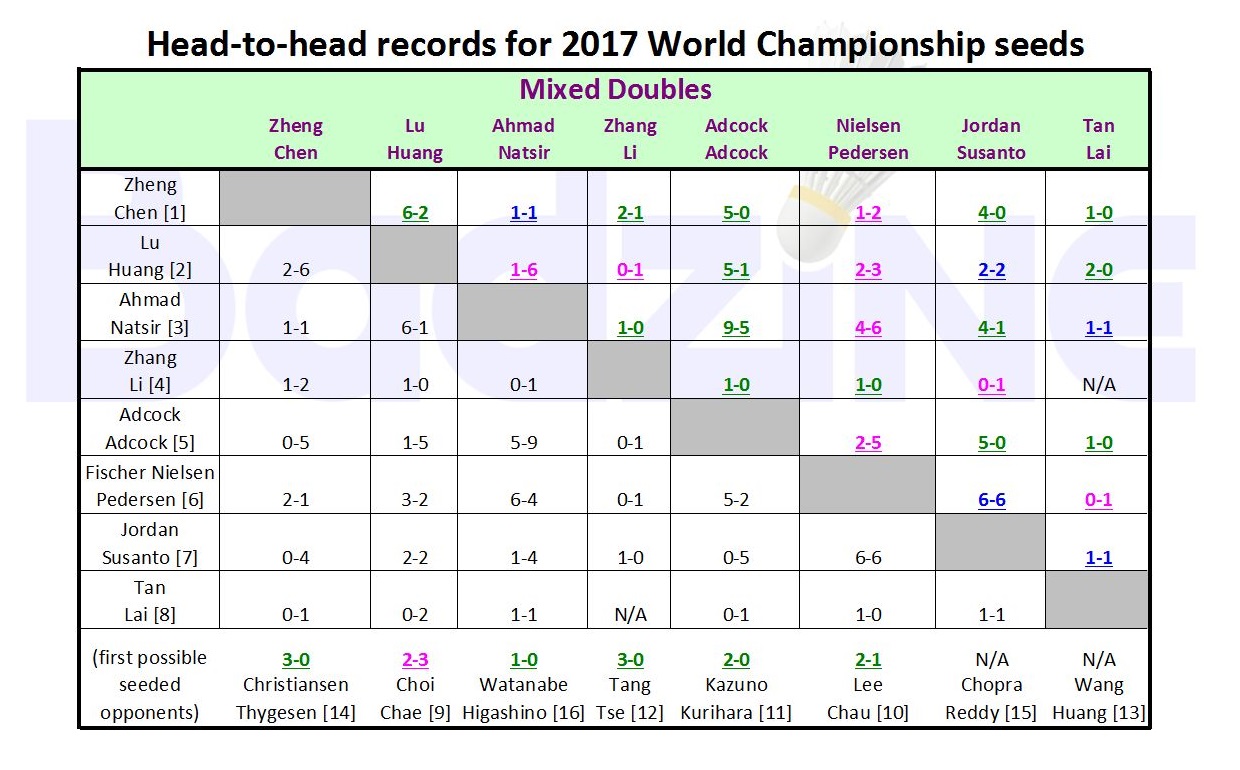
How the top eight seeds stack up against one another and against their respective first possible seeded opponents in the 3rd round. Click on the image to see a .pdf version with links to the individual head-to-head pages on tournamentsoftware.
Men’s doubles: What lies beneath the cream
At different points across recent men’s doubles history, flair has been the differentiator (Lee Yong Dae partnerships) or extraordinary self belief turned into assurance (Cai/Fu) or the talented front court interceptor with chess grandmaster foresight of a few moves ahead (Zhang Nan, Kevin Sanjaya Sukamuljo). In 2017, the quality essential for success is tightness in how partnerships rotate positions on court.
China, Taiwan, Russia, Japan, Denmark and Malaysia offer up the cream of pure men’s doubles talent but the latter drops off according to the ‘tightness’ benchmark led by Takeshi Kamura / Keigo Sonoda. These top Japanese, seeded fourth, have squeezed out all the air bubbles of time to coordinate the fastest tandem attack formation around. Reducing their essence down to its fundamentals reveals endurance at intense levels of concentration. They deliver an increasingly high consistency of solid results as it doesn’t depend entirely on having a good day at the office.
Another feather in the cap of this tight Japanese partnership, which seals their stature as best improved pair of the past year is the ability to promptly take and deliver on instructions from coaches. The whole package is hard to beat after factoring in coach Park Joo Bong, long renown as the foremost doubles player of all time, as the brains behind working out solutions to opponents. The top half of the draw could whittle down to the Japanese facing world #1 Li Junhui / Liu Yuchen at the semis.
The best overall men’s pair on the scene is the surprise re-emergence of veteran Danes Mathias Boe / Carsten Mogensen seeded second who therefore fall into the bottom draw. As the oldest pair in the top 20 they possess the most weapons up from depth of experience to be able to work situations out on their own and on the go, to evincing light and shade in the power of their offense, and being a left and right handed combination optimises their lethal proposition. Speaking of which, sadly and oddly given they just experienced a breakthrough having reached a Superseries final in Sydney, the other defending champion Hendra Setiawan and left handed Malaysian Tan Boon Heong declined the Worlds when pairings composed of different nations are allowed.
Excellence extracts excellence
Round 3 tantalises badminton enthusiasts with the prospect of the 2016 and 2017 All England winners encounter between Russians Ivan Sozonov / Vladimir Ivanov and Indonesians Marcus Fernaldi Gideon / Kevin Sanjaya Sukamuljo. Sukamuljo is entertaining without fail but it is nice to get to see the substance of his talent beyond the slapstick whenever he comes up against another excellent reader of the game such as Ivanov. This is a truer indication of how early Sukamuljo can read and react to the shuttle. The result here is the other semifinalist in all likelihood of meeting Boe/Mogensen.
Erring on the side of the underdog
This year’s men’s doubles has seen four changes at the world #1 position so the standard is close and the ground continues shifting. One conjecture about the draw made up of erring on the side of the underdog for unpredictable match ups and selecting the better pair where it is clear cut arrives at a Danish-Japanese men’s doubles final between Boe/Mogensen and Kamura/Takeshi. Such a case idealises a lot that is beneficial for the sport. It is firstly two first rate pairs producing personal bests, and secondly there’s the classic narrative of the oldest (alluded to in preview 1) still competitive enough to challenge and youngsters on the verge of a breakthrough both in contention for honours that go down in the history books – which would be a first for either.
If they continue playing as well as they have it would be fitting to see Mathias Boe (age 37) / Carsten Mogensen (age 34) crowned World Champions. Ironically, the Danes were inspired enough one fine day at London 2012 to prematurely cut down men of the hour Lee Yong Dae / Jung Jae Sung. Top seeds not winning majors isn’t uncommon. What is shame is when the best players of the season cannot be the ones rewarded but that’s the just nature of sport.
Early matches of interest
Likely Round 2: Li Junhui / Liu Yuchen (CHN) [1] vs. Mohammad Ahsan / Rian Agung Saputro (INA)
Likely Round 2: Liu Cheng / Zhang Nan (CHN) [8] vs. Hiroyuki Endo / Yuta Watanabe (JPN)
Likely Round 3: Goh V Shem / Tan Wee Kiong (MAS) [5] vs. Marcus Ellis / Chris Langridge (ENG) [14]
Likely Round 3: Marcus Fernaldi Gideon / Kevin Sanjaya Sukamuljo (INA)[3] vs. Ivan Sozonov / Vladimir Ivanov (RUS) [10]
Upset potential
Likely Round 2: Or Chin Chung / Tang Chun Man (HKG) vs. Mads Conrad Petersen / Mads Pieler Kolding (DEN) [7]
Likely Round 3: Lu Ching Yao / Yang Po Han (TPE) [11] vs. Mads Conrad Petersen / Mads Pieler Kolding (DEN) [7]
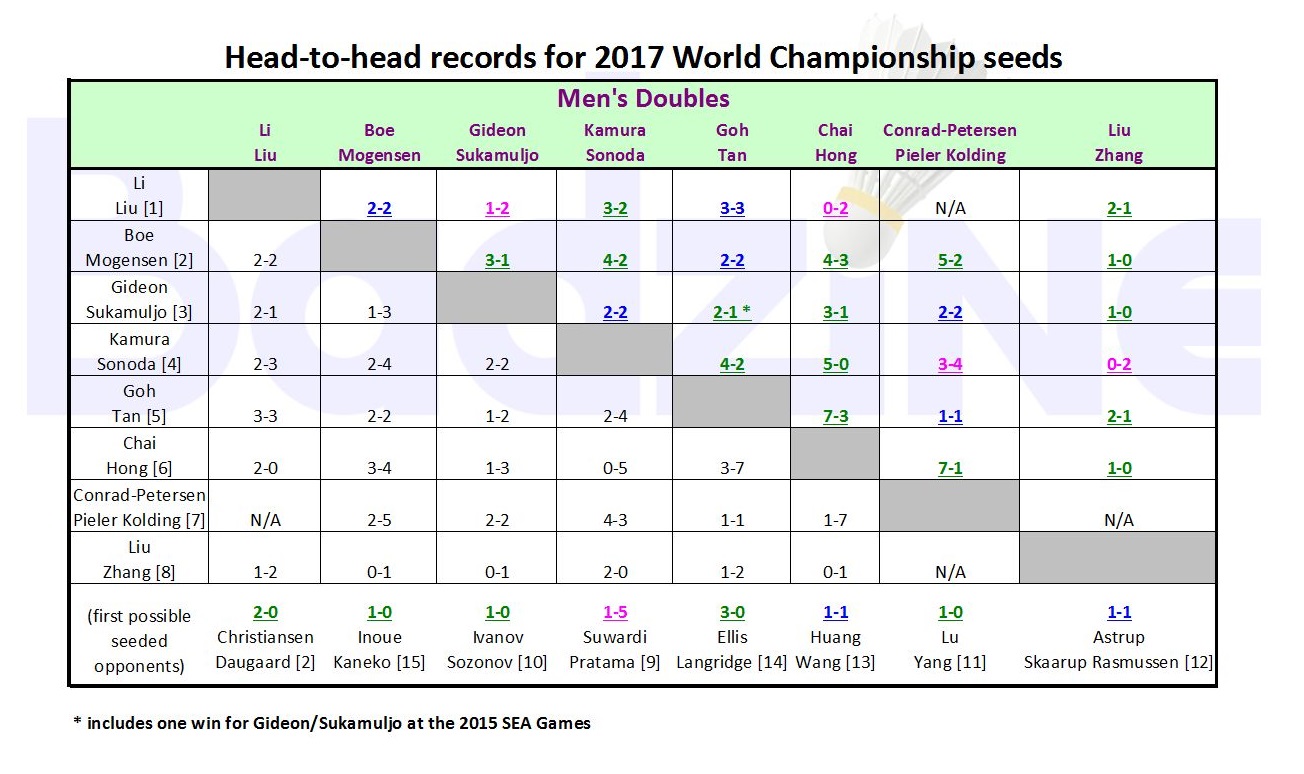
How the top eight seeds stack up against one another and against their respective first possible seeded opponents in the 3rd round. Click on the image to see a .pdf version with links to the individual head-to-head pages on tournamentsoftware.
Women’s doubles: Three red dots dotted throughout
Things could get interesting in women’s doubles. You don’t hear that every day. Intriguing quarter final tussles would be the world #4 facing the #5 with China’s Chen Qingchen / Jia Yifan and Jung Kyung Eun / Shin Seung Chan (pictured) of Korea clashing, and on the other side of the draw the 2017 All England champions Chang Ye Na / Lee So Hee dueling Yuki Fukushima / Sayaka Hirota as their respective head coaches were once mixed doubles partners who ruled the world – Ra Kyung Min and Park Joo Bong respectively.
Nobody can pick the aforementioned while world #1 Misaki Matsutomo / Ayaka Takahashi look assured into the semis and meeting Chen/Jia again means their intense rivalry writes a new chapter in what is turning into a saga.
Denmark’s Kamilla Rytter Juhl / Christinna Pedersen as usual helm the lowest quarter having stationed themselves at world #2 more often than not. A possible quarter-final showing a lot of heart would be Shiho Tanaka / Koharu Yonemoto versus Ashwini Ponnappa / Reddy Sikki which necessitates upsetting the Danes. If the Indians can psych themselves to the same courage as during the Sudirman Cup then it will be a passionate contest with the Danes, and it is wonderful badminton to watch when a pair is playing like they themselves wouldn’t believe (again).
Early women’s doubles matches with upset potential:
Likely Rd 2: Poon Lok Yan / Tse Ying Suet (HKG) vs. Luo Ying / Luo Yu (CHN) [8]
Likely Rd 2: Ashwini Ponnappa / Sikki Reddy (IND) vs. Kamilla Rytter Juhl / Christinna Pedersen (Den) [2]
Likely Rd 3: Yuki Fukushima / Sayaka Hirota (JPN) [9] vs. Huang Dongping / Li Yinhui (CHN) [6]
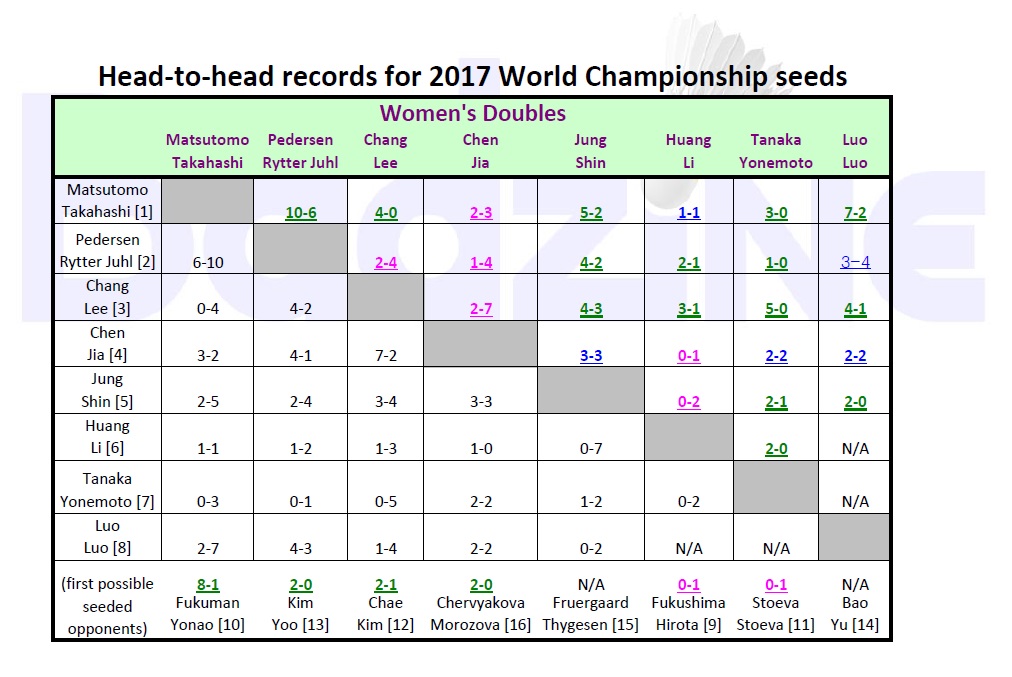
How the top eight seeds stack up against one another and against their respective first possible seeded opponents in the 3rd round. Click on the image to see a .pdf version with links to the individual head-to-head pages on tournamentsoftware.
The eleven-year wait
All in all, with three women’s doubles Japanese pairs separated out across different quarters, the flag of the winner might be known as soon the first semi-final concludes. And should Boe/Mogensen or Takeshi/Kamura, Natsir/Ahmad or the Adcocks make up the other 2017 World Champions then doubles will hear anthems of nations with only red and white being hoisted high.
A sentiment and tune everybody will recognise but probably didn’t know was sung by a Scottish singer, Eddi Reader, goes…
Too many people take second best
But I don’t want anything less
It’s got to be, yeah, perfect.
– Fairground Attraction (from their UK #1 album)
The 11-year wait for another British Worlds gold since Gail Emms / Nathan Robertson’s triumph could end on home soil too. How perfect would that be?
Click here for the complete draws
![WORLDS Preview Part 2 – Doubles: White and red letter day? What do red and white have in common? The flags of doubles winners from different countries can feasibly end up comprising only these two colours. Our preview specialist, Aaron Wong, interprets the […]](https://www.badzine.net/wp-content/uploads/ngg_featured/20170820_1119_WorldChampionships2017_BPRS9919_rotator.jpg)
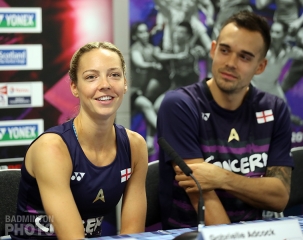
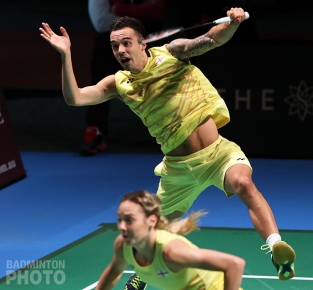
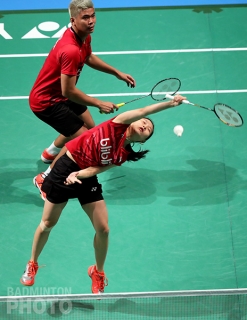
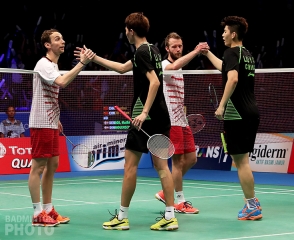
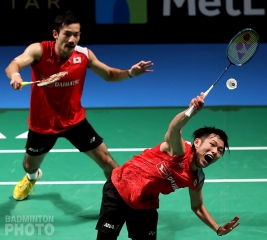
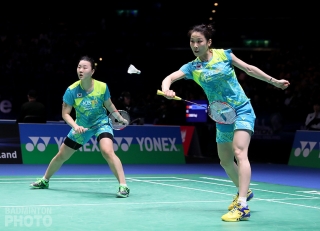

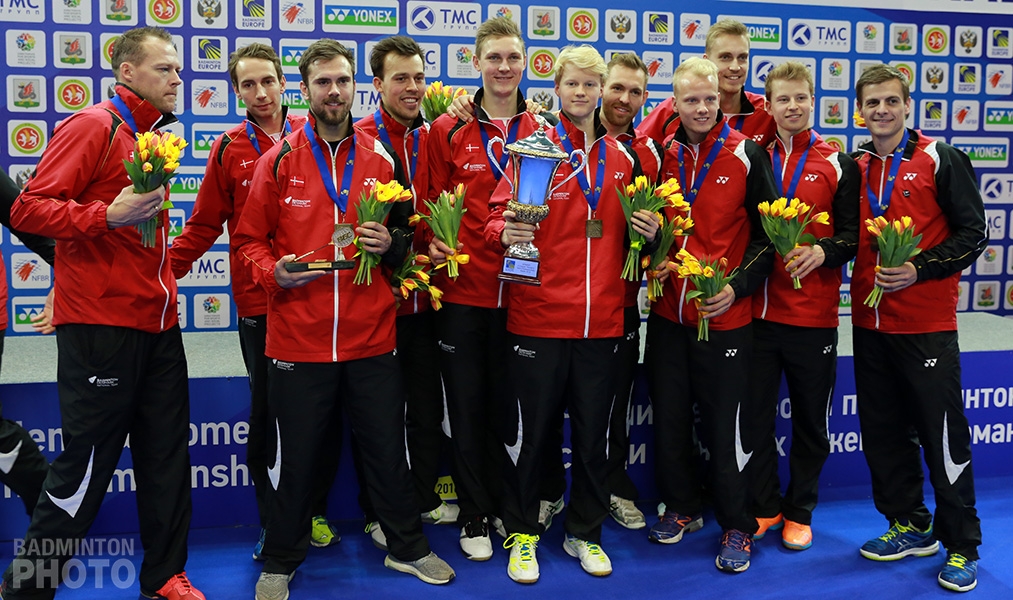
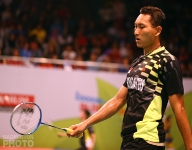

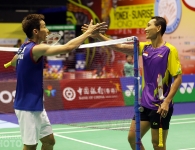
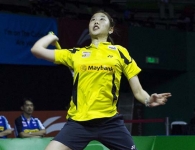
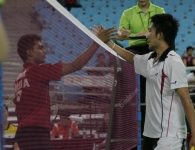
Leave a Reply